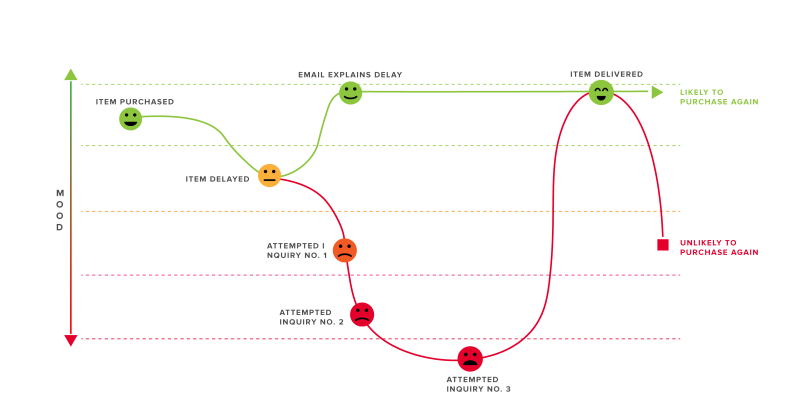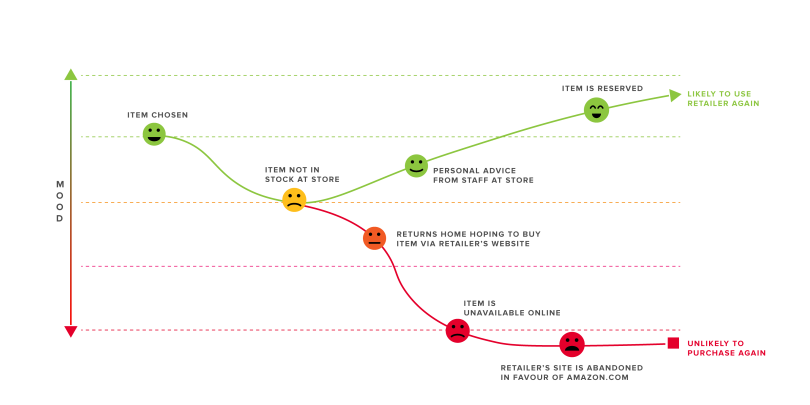Over the years, customer personas have become a mainstay in most marketing departments. Developed by market research firms, identifiers such as “18- to 24-year-old city dwellers” or “65-and-older TikTok users” have informed companies where to focus their marketing efforts, what verbiage will resonate across channels and how their brands will be perceived. But because these customer experiences hold a direct impact on a company’s bottom line, there’s danger in relying solely on these generalized dossiers.
While grouping customers together into personas and segments enables one-to-many messaging and experiences at scale, individuals will always interact with brands across the touchpoints and mediums that resonate with their personal needs — when and how it makes the most sense.
This can lead to some unpredictable behavior: According to Google Research, 98 percent of Americans switch between devices daily, and SDL found that 90 percent of customers expect a seamless customer experience across channels and devices. The reality is that no journey is linear, and no two are the same.
The solution lies in responsibly tracking and leveraging customer data to nurture positive, purposeful experiences that are both proactive and reactive — the former incentivizing and encouraging certain behaviors, the latter prone to changing on a dime. Optimizing the customer experience and value they receive will ultimately yield ROI in more than one way: Positive experiences will result in repeat business and word of mouth, and this approach will also prevent a singular negative experience from derailing a full journey.
When striving to deliver one-on-one experiences, it’s imperative to hold a holistic understanding of your customers, their attributes and their recent behaviors. As a result, Rightpoint follows a quantitative and qualitative approach to understanding customer journeys, sentiment and the trigger points across channels and time with the potential to make or break an experience. We then design experience strategies that intercept and mitigate moments of risk or amplify moments of truth.
Let’s dig into three journeys and explore how you can deliver interventions across touchpoints.
Delaying the Inevitable

Example: Katie is browsing Facebook and sees an ad for an athleisure brand she’s never purchased before. She buys from the site but encounters significant shipping delays. When the clothes finally arrive, the damage has been done, and Katie is dissatisfied with the experience even though the product itself is exactly what she expected. Having a customer service rep proactively reach out to Katie to inform her of the delay and offer her a form of compensation on a future purchase ensures Katie retains a positive affinity for the brand long after purchase.
We understand the targeted journey and combine an experience design plus data-driven approach to identify risks and weak spots in the experience. If Rightpoint were consulting your brand about how to solve the example above, we’d build data-powered triggered messaging into the e-commerce experience, and we’d explore opportunities to improve service levels in a manner that is competitive and cost effective.
Recognizing that these proactive measures won’t eliminate all risk of a poor experience, we’d also introduce retention strategies to further build loyalty and ensure that the Katies of the world think highly of your brand. What’s more, if predictive models suggest Katie as a first-time customer has high propensity to achieve top-tier status in lifetime value, we might recommend investing in incentives as a “goodwill” method to guarantee Katie’s repeat business.
How this impacts ROI: According to PwC, nearly one in three customers (32 percent) indicated that they would be willing to abandon a brand they love after a single bad experience, with this number rising to 59 percent in the U.S. after multiple bad experiences. Each lost customer is a one-two punch: the opportunity cost of growing lifetime value and the cost to acquire a replacement. One approach is to model these scenarios in hopes of uncovering how much to invest in engagement, retention and service strategies.
Following Orders

Summary: John is browsing Google Shopping one day and sees that a food processor by a brand he likes is on sale at a local retailer. But what began as an attempt to support a local business turned into yet another purchase from a .com giant when the store, out of stock, suggested John purchase online, where he was unable to match the sale price. Personal attention from staff — especially when John first arrives at the store — can secure that sale.
This example is a bit generous, as many stores will encounter churn as soon as John visits the store and can’t find the right food processor, particularly if that brand was the centerpiece of the online ad. Still, customers shouldn’t have to jump through multiple hoops only to then be met with more difficulties; this demonstrates a lack of concern for customers’ time.
Our approach would include understanding what drives customers to physical locations and their expectations. From there, we’d identify opportunities within store associate handling, policies and procedures to ensure displaced customers have their needs met. Most often it’s not a matter of the sales associate not wanting to help; rather, they often don’t have the tools they need easily accessible, such as inventory lookups, ability to waive shipping charges, etc. As part of omnichannel experience design, we would also assess how your in-store and online platforms share information with one another — and how they can more effectively sync up to offer a seamless experience that customers will want to repeat.
How this impacts ROI: It costs five times as much to acquire a customer as it does to retain an existing customer, according to Ipsos. If your organization is shedding existing customers, it’s not only missing out on potential revenue — it’s also losing money.
Feasting on Famine

Example: Sally visits the website of a new meal-kit-delivery company, excited to try its healthy offerings. Technical issues that ravage the company’s website — but not its mobile app — put her off and drive her to check out competitors, where a seamless experience across devices continues to capture Sally at each step of the journey. All of the systems speak to each other, ensuring consistent information on ingredients and the ability to alert customer service that Sally should receive a reward for her business. In fact, she might wind up subscribing to a monthly membership, even if that wasn’t her original intention.
Consumer expectations for flawless transition across digital channels is at an all-time high and continuing to increase. Unless the product or service is essential, most customers aren’t willing to try to troubleshoot more than once or to attempt a third channel (like contacting customer service) to place an order.
Rightpoint’s heritage is in designing and building intuitive, inspiring and error-free digital experiences and optimizing them based on digital and customer performance. In the above, we would consider your entire ecosystem beyond experiences:
- How are you driving consumers to these experiences?
- How is service integrated whether self-service, assisted or full service?
- And equally important, what needs to evolve in the employee experience? (For example, training social media managers in how to refer customers to support reps or troubleshoot simple problems themselves.)
How this impacts ROI: According to Forbes, customers who rate their experiences with a business as 10-out-of-10 spend 140 percent more compared to customers who rated their experiences as a three or lower. Achieving that perfect rating requires a holistic lens to customer experience across digital, marketing, service and operations. It also requires establishing a measurement plan to understand the moments of truth across a customer’s journey and attribute positive and negative experiences to transaction size, frequency and lifetime value.
The Takeaway
Customer interactions aren’t necessarily linear, which means that data must be intelligently collected and synthesized to figure out all of the permutations of what’s going on — and how behavioral insights correlate to customer experience and revenue. We recommend adopting a data-driven approach to experience design and evolution that homes in on targeted data points and arranges them in a taxonomy that tracks with your desired outcomes. By establishing a strategy for data and insights, you collect the right data — not simply more of it — and convert it to both proactive and reaction activations and interventions.





